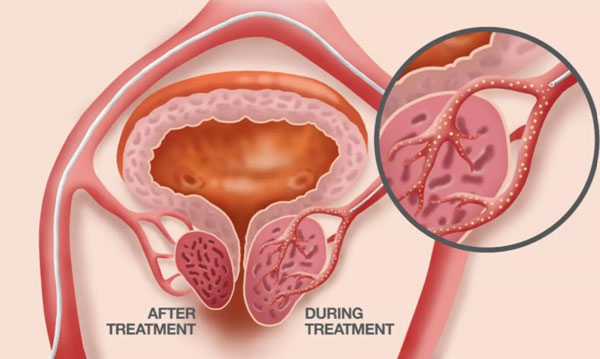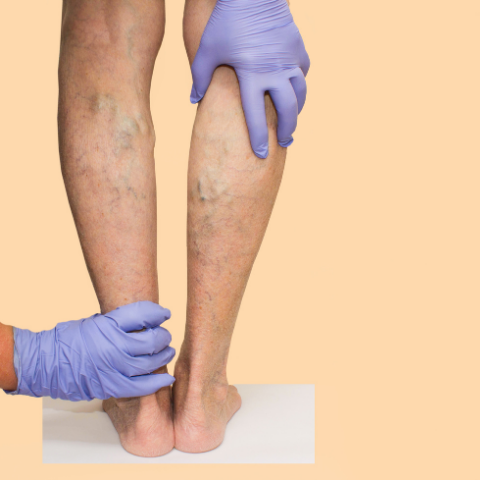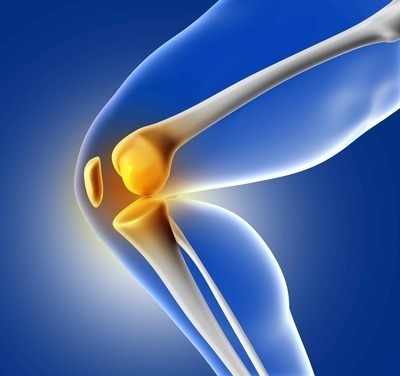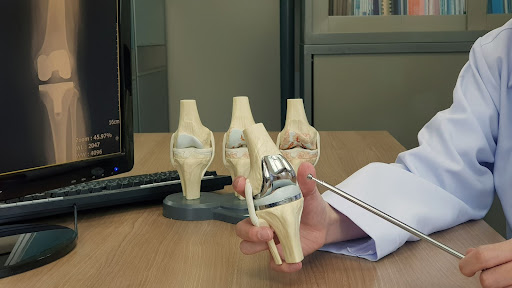Circumcision / General Surgeries
What Is Circumcision?

by Jeevitha
6th January 2022
11 minutes read
Circumcision is a surgical procedure that involves the removal of the foreskin covering the head of the penis. It can be done for various reasons, including cultural, religious, or medical purposes, such as treating phimosis (tight foreskin). The procedure may be performed using traditional surgical techniques or laser circumcision. Costs for circumcision surgery can vary, and the surgical procedure typically involves the removal of the foreskin and stitching the remaining skin. It’s essential to consult a healthcare provider for details and considerations related to circumcision.
Why is Circumcision Performed?
Circumcision is performed for various reasons, including:
- Religious or Cultural Beliefs: Many religious and cultural traditions incorporate circumcision as a rite of passage or as a way to fulfill religious requirements. For example, it is common in Judaism and Islam.
2. Hygiene: Some individuals and healthcare professionals believe that circumcision can make it easier to maintain genital hygiene by reducing the risk of smegma buildup (a substance that can accumulate under the foreskin).
3. Medical Indications: Circumcision may be recommended to treat medical conditions such as phimosis (a tight foreskin that cannot be retracted), recurrent infections of the foreskin or urinary tract, or conditions like balanitis (inflammation of the head of the penis).
4.Reduced Risk of Certain Infections: Some studies suggest that circumcision may reduce the risk of urinary tract infections (UTIs) in infants and lower the risk of sexually transmitted infections (STIs) like HIV and HPV in adult males.
The decision to undergo circumcision is often influenced by personal, cultural, and medical factors. It is essential that the procedure is performed by trained healthcare professionals and that individuals and parents of infants understand the potential risks and benefits associated with circumcision before making a decision.
How is Circumcision Done?
Here is an overview of how circumcision is typically done:
1. Preparation: Before the procedure, the patient is prepared by cleaning the genital area. For infants, local anesthesia is often administered to numb the area and minimize discomfort. Older children and adults may receive local or general anesthesia.
2. Exposure of the Penis: The healthcare provider exposes the glans (head of the penis) by gently retracting the foreskin.
3. Surgical Techniques:
- Conventional Surgical Circumcision: The most common method involves using a scalpel or surgical scissors to carefully remove the foreskin in a precise manner.
- Plastibell Circumcision: An alternative method involves placing a small plastic ring (Plastibell) under the foreskin and tying it off, cutting off blood flow to the foreskin, which eventually falls off.
- Laser Circumcision: In some cases, a laser may be used to remove the foreskin. Laser circumcision is less common but is an option in some healthcare settings.
4. Hemostasis: After removing the foreskin, the healthcare provider ensures there is no bleeding by using techniques such as cauterization or sutures.
5. Dressing and Care: A dressing or ointment may be applied to the surgical site to protect it and aid in healing.
6. Post-Operative Care: Patients or caregivers are provided with instructions for caring for the surgical site during the healing process. This includes keeping the area clean and dry.
Once the surgery is complete, the patient needs to rest for a few hours. The ring, if placed, usually falls out itself after 4-6 days. If non-absorbable stitches are there, the doctor removes the after a week.
The cost of circumcision surgery can vary depending on factors such as the location of the procedure, the specific technique used, and whether it is performed in a hospital or outpatient clinic. It is important to discuss the procedure, anesthesia options, and potential costs with a healthcare provider or surgeon before undergoing circumcision.
Recovery After Circumcision
Recovery after circumcision varies from person to person, but here is a general timeline of what to expect:
Immediate Post-Operative Period (Day 0-2):
- After the procedure, there may be some discomfort, swelling, and mild pain at the surgical site.
- It’s common to have a dressing or bandage over the surgical area.
First Week (Days 3-7):
- Swelling and discomfort usually begin to subside.
- Keeping the area clean and dry is essential to prevent infection.
- Pain can usually be managed with over-the-counter pain relievers or prescription medications as recommended by the healthcare provider.
- It’s important to avoid strenuous physical activities during this time.
Second Week (Days 8-14):
- Most patients can return to regular daily activities.
- The surgical area continues to heal, and any remaining sutures or dressing may be removed during a follow-up appointment with the healthcare provider.
- While some discomfort or sensitivity may persist, it generally continues to improve.
Long-Term Recovery (Weeks to Months):
- Full recovery typically takes several weeks to a few months.
- Patients may gradually resume sexual activity, but it should be done cautiously to avoid irritation or discomfort.
- The appearance of the surgical site may change over time, and any concerns should be discussed with the healthcare provider during follow-up appointments.
Remember that individual recovery experiences can vary, and it’s essential to consult with your healthcare provider for personalized guidance and to address any concerns during the recovery process.
Benefits and Risks of Circumcision
Here are the benefits and risks associated with circumcision.
Benefits of Circumcision:
Hygiene: Circumcision may simplify genital hygiene as there is no foreskin to trap debris or cause smegma buildup.
Reduced UTI Risk: Some studies suggest that circumcised infants may have a lower risk of urinary tract infections (UTIs) during the first year of life.
Lower STI Risk: Circumcision may reduce the risk of contracting sexually transmitted infections (STIs) such as HIV and HPV in adult males. However, it is not a substitute for safe sex practices.
Decreased Penile Cancer Risk: While penile cancer is rare, circumcision has been associated with a reduced risk.
Cultural and Religious Significance: Circumcision holds cultural, religious, and traditional importance for various communities, such as Jews and Muslims.
Risks of Circumcision:
Surgical Risks: As with any surgery, circumcision carries inherent risks, including infection, bleeding, scarring, or adverse reactions to anesthesia.
Pain and Discomfort: The procedure can cause pain and discomfort during and after surgery, particularly in infants.
Possible Complications: Complications such as meatal stenosis (narrowing of the urethral opening), excessive bleeding, or incomplete foreskin removal are rare but possible.
Loss of Foreskin: Circumcision permanently removes the foreskin, eliminating its protective and sensory functions. Some argue that this may lead to decreased sexual sensitivity, but this remains a subject of debate.
Psychological Impact: Some individuals may experience psychological or emotional effects related to the circumcision experience, especially if it was not their choice.
The process is required when the foreskin becomes too tight to be retracted or pulled back over the glans (head of the penis).
Usually, new-born babies go through this process for religious or personal reasons. Older children and adults go through it due to certain medical conditions.
This procedure is fruitful when it comes to personal hygiene and preventive health care. It comes with several benefits as well as risks. Talking about how long does it take to heal after circumcision, it can heal within a week’s time.
Here are a few frequently asked questions about circumcision.
Is circumcision painful?
It does cause some pain, but pain medications along with anaesthetics reduce the discomfort. The medications help during the process as well as afterward.
Why is circumcision important?
It comes with several benefits, some of which are:
- Lower risk of sexually transmitted infections: The procedure also helps lower the risk of sexually transmitted diseases such as HIV, Syphilis, etc. However, it is still essential to maintain safe sexual practices.
- Better hygiene: Circumcision makes it possible to enjoy easy hygiene of the penis. It becomes simpler to wash the area.
- Lower risk of urinary tract infections: Uncircumcised males may sometimes face such infections, calling for the need of circumcision. It is important to control these infections as they may cause kidney problems in the future.
- Lowered risk of penile cancer: Not only does circumcision lower the risk of cancer of the penis, but it also reduces the chances of cervical cancer among females with circumcised sexual partners. (is this true?)
- Decreased penile issues: Phimosis due to difficult retraction of the foreskin also calls for circumcision. This is to avoid inflammation of the head of the penis.
Is circumcision compulsory?
There may be doubts such as is circumcision necessary, or why do people get circumcised. Circumcision is very much avoidable with proper care for the penis. In fact, it’s certainly not an option when there are blood-clotting disorders. It is even inappropriate for premature babies or babies with penis-related abnormalities.
Again, this clinical procedure has no effect on fertility, or sexual pleasure for men and their partners.
What are the risks associated?
There can be chances of bleeding and infection. There’s also a possibility of side effects due to anaesthesia.
There can be foreskin-related issues, when the foreskin cut is too short or too long. Sometimes, the foreskin fails to heal properly, and at other times, remaining foreskin reattaches itself to the penis’ end. The latter case calls for the need of a minor surgical repair.
How is circumcision done – The process
1. Traditional surgery:
This type of circumcision involves pulling out of foreskin and opening the same with a clamp. The doctor then removes the adhesion between the glans and foreskin, then detaches the foreskin. For better coverage, he may place a circumcision device such as a plastibell, Shang ring or a gomco clamp. While this happens after giving local anaesthesia to the patient, shang ring serves as a device for better coverage.
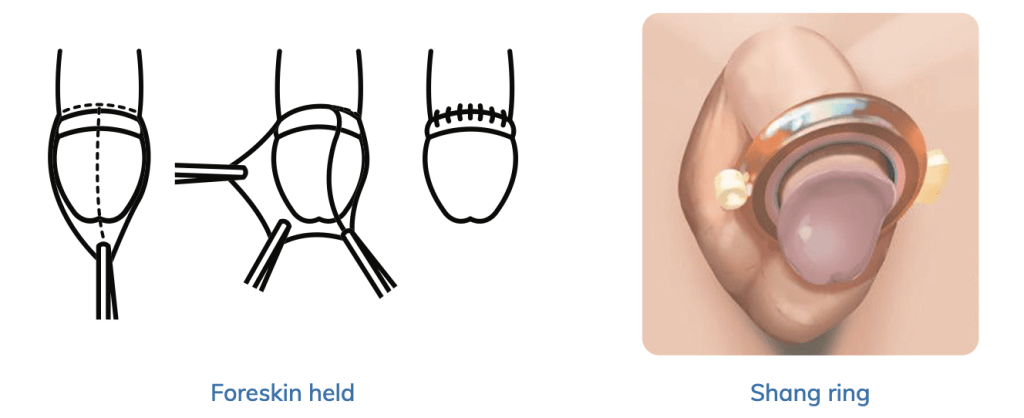
2. Stapler circumcision:
This is a new method for circumcision and uses a sterile, disposable, handheld device, and circular stapler. Here, the stapling device cuts the foreskin and stitches the area with non-bioabsorbable skin staples.
Related Information: Stapler circumcision
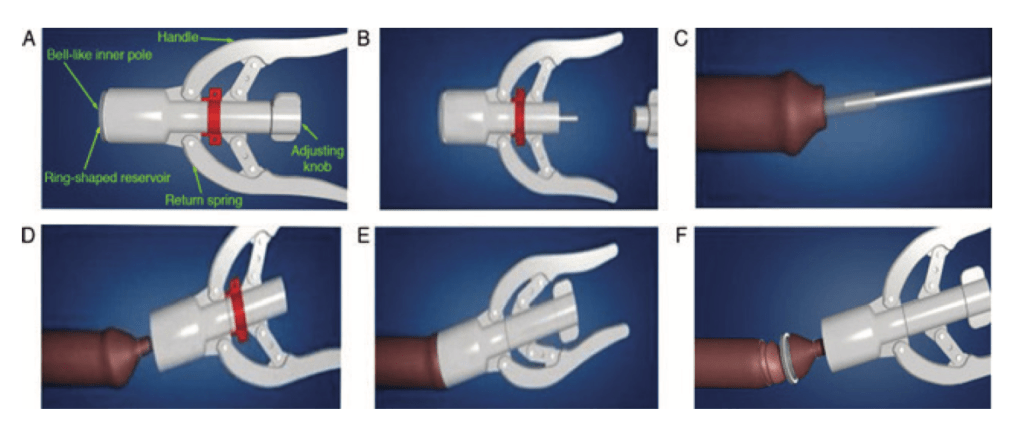
3. Laser circumcision:
In this latest method for circumcision, laser cuts the foreskin and self-dissolving stitches close the wound. This technique has benefits such as minimum blood loss, speedy recovery and better accuracy.
Also Read: Laser circumcision
Post-operative care
Once the surgery is complete, the patient needs to rest for a few hours. The ring, if placed, usually falls out itself after 4-6 days. If non-absorbable stitches are there, the doctor removes the same after a week.
When to contact the doctor?
There may be a need to consult the doctor when:
- Urination does not normalize within 12 hours of circumcision.
- Foul-smelling drainage appears from the tip of penis.
- There’s unstoppable bleeding.
- The plastic ring doesn’t drop off even after two weeks of the process.
Useful links
| Types Of Circumcision | Patient checklist before surgery |
| Which Circumcision Technique Is Better? | Cost of Laser Circumcision |
We at Medfin , the Surgery expert team offers you access to latest and advanced treatment for elective surgeries at most affordable costs. Our Personal Medfin assistants answer all your concerns related to surgyer and ensure that your needs are met in your entire medical journey.
To consult an expert Medfin surgeon near you, please call us on 7026200200. You can also WhatsApp us on 7406557599 (click here to initiate a whatsapp chat).
Here are a few frequently asked questions about circumcision.
Circumcision can be performed at various ages, including shortly after birth (neonatal circumcision), during childhood, or in adulthood. The timing may depend on cultural, religious, or medical reasons, as well as personal preference.
Circumcision is generally considered a permanent procedure. While there are surgical techniques that can attempt to reconstruct a foreskin (foreskin restoration), these procedures are not widely practiced and may not fully restore the pre-circumcision state.
Circumcision is generally considered safe when performed by trained healthcare professionals. However, like any surgical procedure, there are risks, including infection, bleeding, scarring, and adverse reactions to anesthesia. Severe complications are rare but can include excessive bleeding or injury to the penis.
Whether circumcision is covered by insurance can vary by region and insurance provider. Some health insurance plans may cover the procedure for medical or preventive reasons, while others may not. It’s important to check with your insurance provider for specific coverage details.
CATEGORIES
- ACL Reconstruction
- Anal Fissures
- Anal Fistula
- Appendicitis
- ASK A DOCTOR
- Benign Prostatic Hyperplasia
- Breast Lump Excision
- Cataract
- Circumcision
- Conditions & Diseases
- Cosmetology
- Covid-19
- Cure
- Endocrinology
- ENGLISH VIDEOS
- Eye Care
- Gallstones
- General Surgeries
- Government Schemes
- Gynaecology
- Gynecomastia
- Health
- Health Insurance
- Hernia
- Hindi
- Hip Arthoscopy
- Hip Replacement
- Hip Replacement Surgery
- Hydrocele
- Kannada
- Kidney Stones
- Knee Arthroscopic
- Laparoscopic
- LASER
- Latest Treatments
- Lifestyle
- Liposuction
- Medfin Stories
- Medicine
- Nephrology
- Ophthalmology
- Orthopaedic
- Paraphimosis
- Patient Testimonials
- PCL Reconstruction
- Phimosis
- Piles (Hemorrhoids)
- Pilonidal Sinus
- Proctology
- Prostate Artery Embolization
- Rhinoplasty
- Second Opinion
- Total Knee Replacement
- Urology
- Uterine Artery Embolization
- Uterine Fibroids
- Varicocele
- Varicose Veins
- Vascular
- VIDEOS
